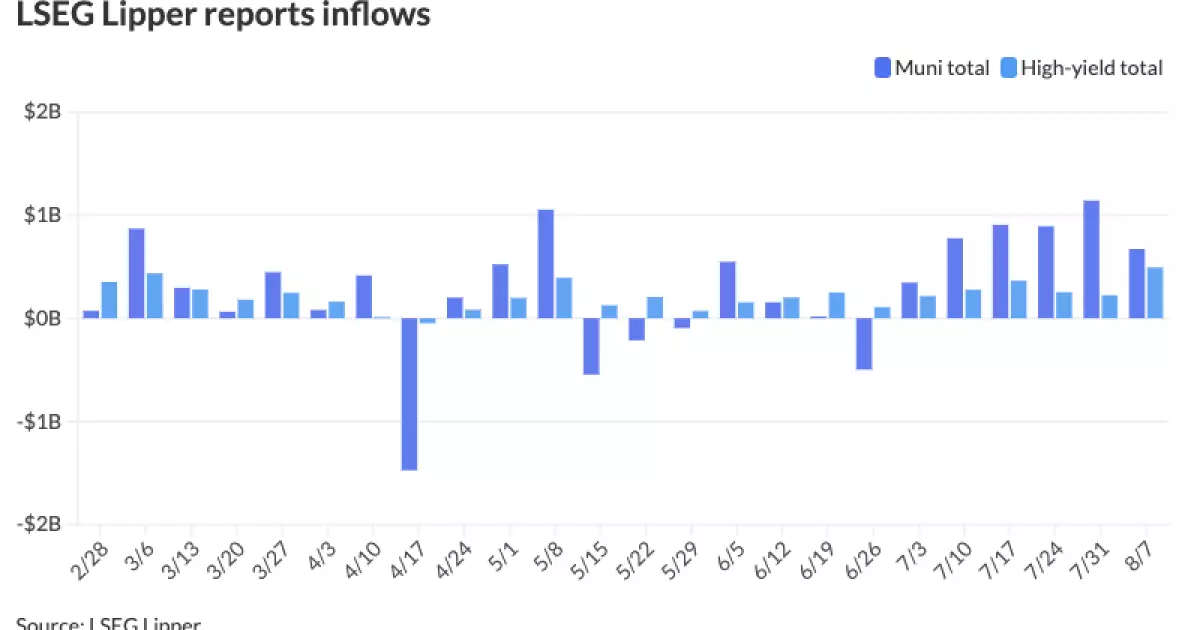The municipal bonds market witnessed a weaker trend on Thursday due to the rise in U.S. Treasury yields and the rally in equities. Triple-A yields saw an increase of two to seven basis points, while USTs rose four to five points as volatility persisted in both markets. This recent trend has been characterized by “crazy volatility,” according to Jennifer Johnston, who serves as the director of research for municipal bonds at Franklin Templeton. The market has experienced a rollercoaster ride of ups and downs, ultimately leading to a return to a near status quo. While some stability has been restored, the overall situation remains uncertain, with several factors contributing to the ongoing market fluctuations.
Several key events have played a role in shaping the current environment of market volatility. Johnston highlights the upcoming Federal Open Market Committee meeting and major shifts in the presidential election as significant contributing factors. The unprecedented political landscape, marked by events such as the assassination attempt on former President Donald Trump and the withdrawal of President Joe Biden from the race, has added a layer of uncertainty to the market. The implications of this instability and divisiveness on market dynamics leading up to the election remain unclear. These uncertainties have already had tangible effects, such as Chicago pulling its planned deal of $643.11 million of GOs. Other issuers may follow suit as they choose to wait for the market to stabilize before proceeding with their deals.
Issuance and Demand
As the market navigates this period of heightened volatility, questions arise regarding issuance and demand for municipal bonds. With over five weeks until the Federal Reserve’s September meeting, anticipation of a slowdown in issuance looms. However, Johnston notes that issuers are unlikely to halt completely until then. The critical issue at hand is whether there will be sufficient demand to meet the upcoming supply. While there has been growth on the separately managed account side, there are concerns about when money will return to open-ended mutual funds. If interest rates begin to decline, it could help stabilize the market and attract traditional investors back into the fold.
Market Performance and Yields
Despite the recent rise in yields, the relative value of bonds remains relatively low, particularly for bonds with maturities of 10 years and below. Muni to UST ratios have held within a range, with the two-year ratio at 66%, the three-year at 68%, the five-year at 68%, the 10-year at 68%, and the 30-year at 84%. These ratios provide a snapshot of the market dynamics and the relationship between municipal bonds and U.S. Treasuries.
In the primary market, recent activity has seen notable deals being priced. J.P. Morgan priced $462.975 million of AMT Tampa International Airport revenue bonds, while Wells Fargo priced $167 million of Tamarron Project special revenue bonds. Frost Bank priced $141.755 million of PSF-insured unlimited tax school building bonds, and Goldman Sachs priced $105.82 million of Williams College issue revenue bonds. Oyster Bay, New York, sold $135.24 million of bond anticipation notes in the competitive market to Wells Fargo. These transactions highlight the ongoing activity in the municipal bonds market amidst the prevailing market conditions.
Yield Curve and Market Analysis
Various market indicators paint a complex picture of the current state of municipal bonds. Refinitiv MMD, ICE Data Services, and S&P Global Market Intelligence yield curves show differing movements, each reflecting the nuances of the market. The trend extends to other benchmarks such as Bloomberg BVAL and Treasuries, with fluctuations in yields and basis points across different timelines. As the market grapples with volatility, investors and market participants closely monitor these indicators to assess the evolving landscape of municipal bonds.
The municipal bonds market is navigating a challenging period characterized by heightened volatility and uncertainty. As market dynamics continue to shift, stakeholders must adapt to the changing environment and carefully evaluate their investment strategies. While recent trends have demonstrated resilience in the face of market turbulence, the road ahead remains unpredictable. By staying informed and proactive, investors can weather the storm and capitalize on opportunities in this dynamic market environment.

